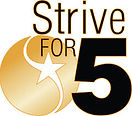
Chapter 27
The Rise of Animal Diversity
Notes
Bellwork
Assists:
Data Analysis
Quiz
Chameleon
Learning Objectives:
1.A.4: Biological evolution is supported by scientific evidence from many disciplines, including mathematics.
1.B.1: Organisms share many conserved core processes and features that evolved and are widely distributed among organisms today.
1.B.2: Phylogenetic trees and cladograms are graphical representations (models) of evolutionary history that can be tested.
1.C.3: Populations of organisms continue to evolve.
2.C.2: Organisms respond to changes in their external environments.
TED Talk: 6th Extinction
Respond on Notes 3B: Do you believe we are currently in a 6th extinction? Justify.
Identify possible mechanisms of a 6th extinction.
Bozeman Science: Animals
Watch video.
Take notes on 2B.

Scientific Skills Exercise:
Understanding experimental design and interpreting data
Is there evidence of selection for
defense adaptations in mollusk populations exposed to predators?
Textbook page 570--Complete on Notes 3B.

Test Your Understanding
Textbook page 573, #1-7
Complete on Notes 7B.
As you complete test, mark questions with:
a star (I know this),
a checkmark (I might know this),
or a question mark (I don't know, I guessed).
Self-correct using answers in back of textbook.
Write validations/corrections for checkmarks, question marks, and missed stars (oops).

Illustrative
x
a
m
p
l
e
s
Predator-prey relationships
Analysis of phylogenetic trees
Chordate characteristics
Descent with modification
Eukaryotic example of evolution
Morphogenesis of fingers/toes
Absence of legs in sea mammals
Amniotic egg
Mammalian lineages
Herbivory
Reciprocal selection
Human impact on ecosystems
Species extinction rates


Log Entry 3
Lions and tigers and bears, Oh, my!
What's your favorite animal? Why?
You should have one animal as a "favorite" go-to from major classes (as in mammals, fish, reptiles, birds, amphibians...) in order to have a better handle on animalia comparison. That's a "someday" thing...

Chapter 27 Lab: The Underworld
The underworld lab is a discovery lab aimed at identification of various pond organisms. Get ready to sketch, research, and identify,
Use your knowledge of animal development to classify 3 types of snails, rollie-pollies, helgramites ... Create a phylogenetic tree with a justification summary.

FRQ Log
A: Discuss the difficulties that scientists face when trying to classify the numerous taxa of insects.
B: Describe the primary difference between protostomes and deuterostomes, and explain which group includes humans.
C: Describe three derived features of chordates.
D: Identify some of the derived traits in the evolution of vertebrates that enabled many of these species to live on land.
E: Describe the amniotic egg and evaluate its significance.

I can't see the forest for the trees...
Basic Biology Text:
Chapter 18
Chapter 29
At a minimum, understand:
Evolution ties all parts of biology together. The process of evolution drives the diversity and unity of life. Phylogenetic trees and cladograms are graphical representations of evolutionary history that can be tested. Molecular paleontology studies body plan evolution of animals. DNA comparisons help determine which phyla are most closely related. Small changes in genes can cause major change in body structure.






